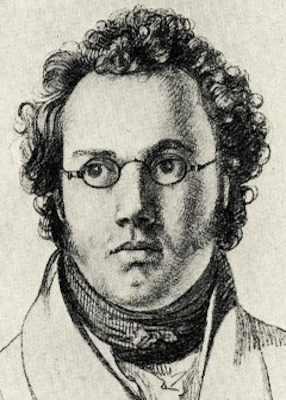Schubert
Symphony No. 5 in B-flat major, D. 485
00:00 - Allegro
07:04 - Andante con moto
16:14 - Menuetto. Allegro molto
20:59 - Allegro vivace
Performed by Charles Mackerras and the Orchestra of the Age of Enlightenment (1990).
"Schubert's Fifth Symphony, composed in 1816, is Mozartian in scale and design and embraces the earlier Classical style so wholeheartedly that Beethoven might as well never have lived. Schubert's self-confessed admiration for Mozart is never far below the surface, and is especially apparent in
the Menuetto and in the Finale, which also owes something to Haydn." - Adélaïde de Place
Painting: Italian Landscape with Umbrella Pines (1807), Hendrik Voogd
Franz Schubert's Symphony No. 5 in B♭ major, D. 485, was written mainly in September 1816 and completed on October 3, 1816.[1] It was finished six months after the completion of his previous symphony.
[Scoring]
Scored for one flute, two oboes, and two bassoons, along with two horns in B♭ and E♭ and strings. Of all of Schubert's symphonies, it is scored for the smallest orchestra. It is the only one of his symphonies which does not include clarinets, trumpets or timpani as part of the instrumentation.
Mozartean influence
In character, the writing is often said to resemble Mozart; Schubert was infatuated with the composer at the time he composed it, writing in his diary on June 13 of the year of composition, "O Mozart! immortal Mozart! what countless impressions of a brighter, better life hast thou stamped upon our souls!"[2] This is reflected particularly in the lighter instrumentation, as noted above. Indeed, the instrumentation matches that of the first version (without clarinets) of Mozart's 40th symphony.[3]
For another example, there is a strong similarity between the opening themes of the second movement of D. 485 and the last movement of Mozart's Violin Sonata in F major, K. 377.
There are four movements:
- Allegro (B♭ major, cut time 2
2) - Andante con moto (E♭ major, 6
8 time) - Menuetto. Allegro molto (G minor, 3
4 time, with a Trio in G major) - Allegro vivace (B♭ major, 2
4 time)
I. Allegro
This is the first Schubert symphony that does not begin with a slow introduction. What starts the movement is a four-bar structural upbeat similar to the one that begins the finale of his Fourth Symphony before the main theme starts on bar 5.[3] The main is a simple rising arpeggio with a dotted rhythm that dominates all of the themes of the exposition. The first movement is a slightly unusual sonata form since the recapitulation begins, as in the first movement of Mozart’s sonata facile (and Schubert's Trout Quintet), in the subdominant, not in the main key of the piece as is more usual. Schubert had previously used this device in his Second Symphony.
II. Andante con moto
The slow movement opens with a theme in two repeated stanzas. Following that, here is a modulation to C♭ that is very characteristic of Schubert, even at age 19. The return to the main theme is straight, passing through G minor on the way; there is a repetition of the distant modulation afterwards, though to G♭ this time and with a more immediate return.
III. Menuetto. Allegro molto
The menuetto has the chromaticism though not the polyphony of the menuetto of Mozart's 40th Symphony. The progression used mid-way through the movement to modulate is borrowed almost directly from the 40th — using the same approach (a gradual layering of instruments) to a dominant seventh chord. The trio is quiet throughout, and only gradually accumulates instruments, beginning with only bassoon and strings, and with a subtle suggestion of a pastoral mood over held lower string notes.
IV. Allegro vivace
The finale is the shortest of the four movements.
'♣ 음악 감상실 ♣ > [Schubert]' 카테고리의 다른 글
| Schubert - Fantasy in F minor for Piano Four Hands, D940 (0) | 2019.08.28 |
|---|---|
| Schubert - Rondo in A major für Violine und Orchester( String Quartet, D 438 ) (0) | 2019.01.13 |
| Schubert - Piano Sonata No. 21 In B-flat Major, D. 960 (0) | 2017.11.11 |
| Franz Schubert - Octet in F major, D 803 (Op. posth. 166) (0) | 2017.10.27 |
| Franz Schubert -String Trio D 581, 471 (0) | 2017.06.19 |

